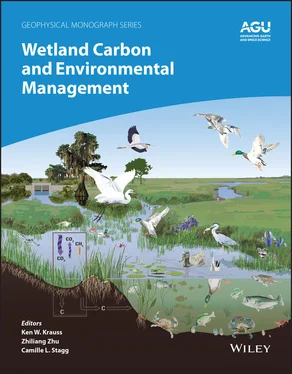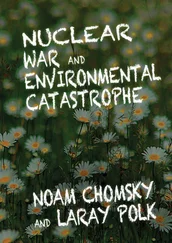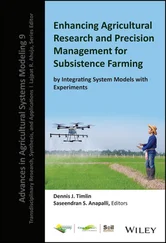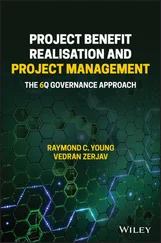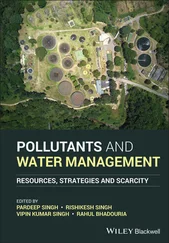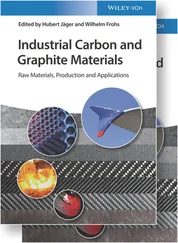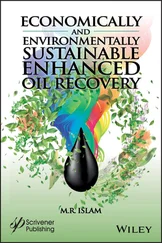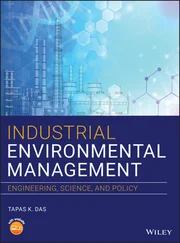244 Kroeger, K. D., Crooks, S., Moseman‐Valtierra, S., & Tang, J. (2017). Restoring tides to reduce methane emissions in impounded wetlands: A new and potent Blue Carbon climate change intervention. Scientific Reports, 7(1), 11914. https://doi.org/10.1038/s41598‐017‐12138‐4
245 Kuehn, K. A., Lemke, M. J., Suberkropp, K., & Wetzel, R. G. (2000). Microbial biomass and production associated with decaying leaf litter of the emergent macrophyte Juncus effusus. Limnology and Oceanography, 45(4), 862–870. https://doi.org/10.4319/lo.2000.45.4.0862
246 Küsel, K., Dorsch, T., Acker, G., & Stackebrandt, E. (1999). Microbial reduction of Fe(III) in acidic sediments: Isolation of Acidiphilium cryptum JF‐5 capable of coupling the reduction of Fe(III) to the oxidation of glucose. Applied and Environmental Microbiology, 65(8), 3633–3640. https://doi.org/10.1128/aem.65.8.3633‐3640.1999
247 Kuwata, M., Kai, F. M., Yang, L., & Itoh, M. (2016). Temperature and burning history affect emissions of greenhouse gases and aerosol particles from tropical peatland fire. Journal of Geophysical Research: Atmospheres, 122, 1281–1292. https://doi.org/10.1002/2016JD025897
248 Laanbroek, H. J. (2010). Methane emission from natural wetlands: Interplay between emergent macrophytes and soil microbial processes. A mini‐review. Annals of Botany, 105(1), 141–153. https://doi.org/10.1093/aob/mcp201
249 LaCroix, R., Tfaily, M., McCreight, M., Jones, M. E., Spokas, L., & Keiluweit, M. (2018). Shifting mineral and redox controls on carbon cycling in seasonally flooded soils. Biogeosciences Discussions, 1–36. https://doi.org/10.5194/bg‐2018‐432
250 Lai, D. Y. F. (2009). Methane dynamics in northern peatlands: A review. Pedosphere, 19(4), 409–421. https://doi.org/10.1016/S1002‐0160(09)00003‐4
251 Laiho, R. (2006). Decomposition in peatlands: Reconciling seemingly contrasting results on the impacts of lowered water levels. Soil Biology and Biochemistry, 38(8), 2011–2024. https://doi.org/10.1016/j.soilbio.2006.02.017
252 Lalonde, K., Mucci, A., Ouellet, A., & Gélinas, Y. (2012). Preservation of organic matter in sediments promoted by iron. Nature, 483(7388), 198–200. https://doi.org/10.1038/nature10855
253 Landre, A. L., Watmough, S. A., & Dillon, P. J. (2009). The effects of dissolved organic carbon, acidity and seasonality on metal geochemistry within a forested catchment on the Precambrian Shield, central Ontario, Canada. Biogeochemistry, 93(3), 271–289. https://doi.org/10.1007/s10533‐009‐9305‐0
254 Langley, J. A., & Megonigal, J. P. (2010). Ecosystem response to elevated CO2 levels limited by nitrogen‐induced plant species shift. Nature, 466(7302), 96–99. https://doi.org/10.1038/nature09176
255 Langley, J. A., Mckee, K. L., Cahoon, D. R., Cherry, J. A., & Megonigal, J. P. (2009). Elevated CO2 stimulates marsh elevation gain, counterbalancing sea‐level rise. Proceedings of the National Academy of Sciences of the United States of America, 106(15), 6182–6186. https://doi.org/10.1073/pnas.0807695106
256 LaRowe, D. E., & Van Cappellen, P. (2011). Degradation of natural organic matter: A thermodynamic analysis. Geochimica et Cosmochimica Acta, 75(8), 2030–2042. https://doi.org/10.1016/j.gca.2011.01.020
257 LaRowe, D. E., Arndt, S., Bradley, J. A., Estes, E. R., Hoarfrost, A., Lang, S. Q., et al. (2020). The fate of organic carbon in marine sediments ‐ New insights from recent data and analysis. Earth‐Science Reviews, 204(August 2019), 103146. https://doi.org/10.1016/j.earscirev.2020.103146
258 Lee, A. A., & Bukaveckas, P. A. (2002). Surface water nutrient concentrations and litter decomposition rates in wetlands impacted by agriculture and mining activities. Aquatic Botany, 74(4), 273–285. https://doi.org/10.1016/S0304‐3770(02)00128‐6
259 Lehmann, J., & Kleber, M. (2015). The contentious nature of soil organic matter. Nature, 528(7580), 60–68. https://doi.org/10.1038/nature16069
260 Leifeld, J., Steffens, M., & Galego‐Sala, A. (2012). Sensitivity of peatland carbon loss to organic matter quality. Geophysical Research Letters, 39(14), 1–6. https://doi.org/10.1029/2012GL051856
261 Lenhart, K., Bunge, M., Ratering, S., Neu, T. R., Schüttmann, I., Greule, M., et al. (2012). Evidence for methane production by saprotrophic fungi. Nature Communications, 3. https://doi.org/10.1038/ncomms2049
262 Liu, S., Hu, R., Zhao, J., Brüggemann, N., Bol, R., Cai, G., et al. (2014). Flooding effects on soil phenol oxidase activity and phenol release during rice straw decomposition. Journal of Plant Nutrition and Soil Science, 177(4), 541–547. https://doi.org/10.1002/jpln.201300356
263 Loisel, J., Yu, Z., Beilman, D. W., Camill, P., Alm, J., Amesbury, M. J., et al. (2014). A database and synthesis of northern peatland soil properties and Holocene carbon and nitrogen accumulation. The Holocene, 24(9), 1028–1042. https://doi.org/10.1177/0959683614538073
264 Luo, M., Liu, Y., Huang, J., Xiao, L., Zhu, W., Duan, X., & Tong, C. (2018). Rhizosphere processes induce changes in dissimilatory iron reduction in a tidal marsh soil: A rhizobox study. Plant and Soil, 433(1–2), 83–100. https://doi.org/10.1007/s11104‐018‐3827‐y
265 Luo, M., Zhai, Z., Ye, R., Xing, R., Huang, J., & Tong, C. (2020). Carbon mineralization in tidal freshwater marsh soils at the intersection of low‐level saltwater intrusion and ferric iron loading. Catena, 193(January), 104644. https://doi.org/10.1016/j.catena.2020.104644
266 Ma, Z., Melville, D. S., Liu, J., Chen, Y., Yang, H., Ren, W., et al. (2014). Rethinking China’s new great wall. Science, 346(6212), 912–914. https://doi.org/10.1126/science.1257258
267 MacCarthy, R., & Davey, C. B. (1976). Nutritional problems of Pinus taeda L. (loblolly pine) growing on pocosin soil. Soil Science Society of America Journal, 40(4), 582–585. https://doi.org/10.2136/sssaj1976.03615995004000040034x
268 MacDonald, J. A., Fowler, D., Hargreaves, K. J., Skiba, U., Leith, I. D., & Murray, M. B. (1998). Methane emission rates from a northern wetland: Response to temperature, water table and transport. Atmospheric Environment, 32(19), 3219–3227. https://doi.org/10.1016/S1352‐2310(97)00464‐0
269 Mahieu, N., Olk, D. C., & Randall, E. W. (2002). Multinuclear magnetic resonance analysis of two humic acid fractions from lowland rice soils. Journal of Environmental Quality, 31(2), 421–430. https://doi.org/10.2134/jeq2002.4210
270 Malhotra, A., Brice, D., Childs, J., Graham, J., Hobbie, E., Vander Stel, H., et al. (2020). Peatland warming strongly increases fine‐root growth. Proceedings of the National Academy of Sciences, 117(30), 202003361. https://doi.org/10.1073/pnas.2003361117
271 Männistö, E., Korrensalo, A., Alekseychik, P., Mammarella, I., Peltola, O., Vesala, T., & Tuittila, E. S. (2019). Multi‐year methane ebullition measurements from water and bare peat surfaces of a patterned boreal bog. Biogeosciences, 16(11), 2409–2421. https://doi.org/10.5194/bg‐16‐2409‐2019
272 Marlier, M. E., DeFries, R. S., Kim, P. S., Koplitz, S. N., Jacob, D. J., Mickley, L. J., & Myers, S. S. (2015). Fire emissions and regional air quality impacts from fires in oil palm, timber, and logging concessions in Indonesia. Environmental Research Letters, 10(8), 85005. https://doi.org/10.1088/1748‐9326/10/8/085005
273 Marsh, A. S., Rasse, D. P., Drake, B. G., & Megonigal, J. P. (2005). Effect of elevated CO2 on carbon pools and fluxes in a brackish marsh. Estuaries, 28(5), 694–704. https://doi.org/10.1007/BF02732908
274 Masiello, C. A., Gallagher, M. E., Randerson, J. T., Deco, R. M., & Chadwick, O. A. (2008). Evaluating two experimental approaches for measuring ecosystem carbon oxidation state and oxidative ratio. Journal of Geophysical Research: Biogeosciences, 113(3), 1–9. https://doi.org/10.1029/2007JG000534
Читать дальше
